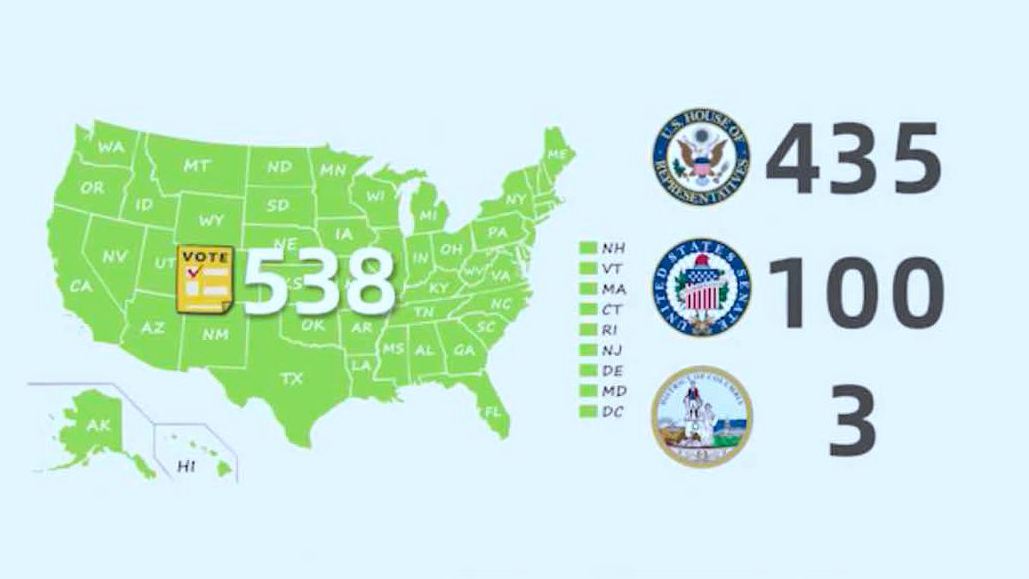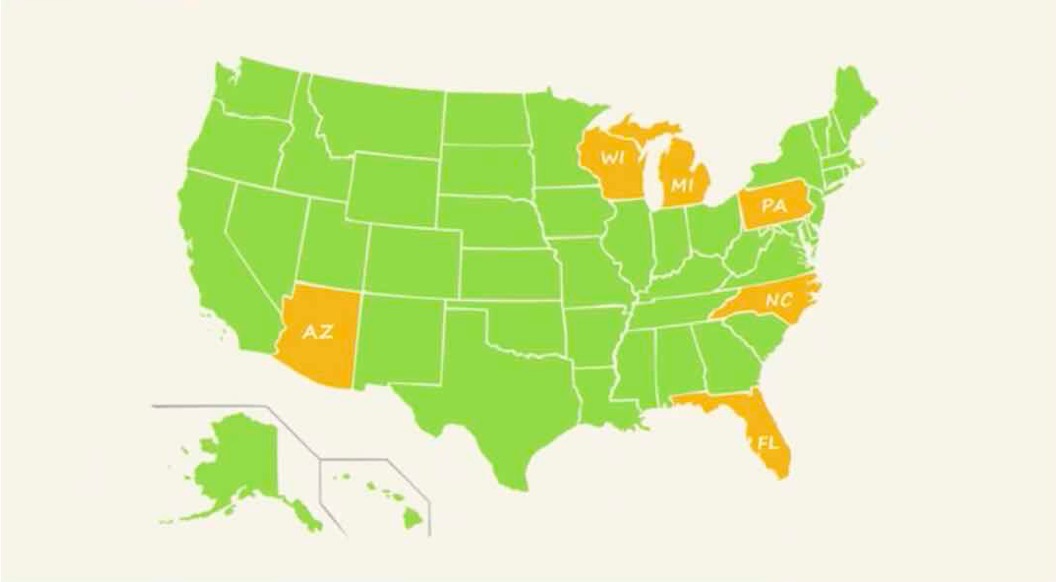The clock is ticking towards election day in the United States, with the eyes of the world on the battle between Donald Trump and Joe Biden for the keys to the White House.
The winner of the November 3 contest is decided via a system designed to give all 50 states a say, but it can have a curious outcome: the candidate with the most votes doesn't necessarily become president.
 Democrat Hillary Clinton won three million more votes than Trump in 2016, for example, but she's not in the White House. Similarly, Republican George W. Bush lost the popular vote to Al Gore in 2000, but the Democrat still lost the election. And Trump could earn a second term as president even if Biden wins the most votes across the country.
Democrat Hillary Clinton won three million more votes than Trump in 2016, for example, but she's not in the White House. Similarly, Republican George W. Bush lost the popular vote to Al Gore in 2000, but the Democrat still lost the election. And Trump could earn a second term as president even if Biden wins the most votes across the country.In short, the national vote is irrelevant in U.S. presidential elections – all that matters is the Electoral College.
How does the Electoral College work?
The Electoral College essentially creates 51 mini-elections, with individual contests in each of the 50 states and the District of Colombia (DC).
A total of 538 Electoral College votes (EVs) are split between the states and DC. The EVs are weighted by population and mirror the spread of seats in Congress: 435 representatives, 100 senators plus an additional three votes for DC equals 538.

For example, California, the most populous U.S. state, has 53 representatives and two senators – equaling 55 electoral votes. Wyoming, the least populous state, has just one representative and two senators – and so three electoral votes.
In all states bar Maine and Nebraska – which award two EVs to the statewide winner and one to the winner in each congressional district – the statewide winner takes all the votes.
To win the presidency, a candidate must win enough states to pass the magic number of 270 – a majority of EVs.
Why are the swing states critical?
Strategizing where to campaign – and spend money on advertising and organizing – is vital to reaching 270. Recent history suggests around 37 states plus DC are firmly committed or lean heavily to one party or the other.
It's safe to assume, for example, that California's 55 votes will go to Biden, and Wyoming's three will stick with Trump. Overall, there are around 17 states plus DC reliably in the Democratic column and 20 in the Republican column.

By this measure, Biden effectively starts the election on 212 votes and Trump on 115. So where can the Democrat win the 58 votes he needs, and where can the Republican find 155?
The key to every U.S. presidential election lies in the swing states, the battlegrounds which either party has a chance of winning. These are the states where the candidates will spend heavily on advertising and – pandemic allowing – make numerous campaign visits.
In 2020, the key states to watch are Florida (29 EVs), Pennsylvania (20 EVs), North Carolina (15 EVs), Michigan (16 EVs), Wisconsin (10 EVs), and Arizona (11 EVs) though in such an unpredictable year others, such as Minnesota (10 EVs), Georgia (16 EVs) and Texas (38 EVs), could also come into play.
How are Biden and Trump aiming to win?
A starting point for determining the battlegrounds is to assess the margins of victory in 2016: Trump triumphed over Clinton with victories of less than one percentage point in the Blue Wall states of Michigan, Pennsylvania, and Wisconsin.
Those 46 Electoral College votes, won by the narrowest of margins in Midwestern states which hadn't voted Republican in decades, put the Republican in the White House.

The president can afford to lose two of the Blue Wall states in 2020 and still narrowly win the Electoral College – so long as he holds on to all the others, he took in 2016 when he won states reflecting 306 Electoral College votes in total.
The first and most obvious route to President Biden is for him to hold the states Clinton took in the last election and flip back Michigan, Pennsylvania and Wisconsin – that would give him 278, putting him in the White House even if he loses vote-heavy states like Florida.

The Trump campaign initially looked to expand its target states to those won narrowly by Clinton in 2016, such as New Hampshire (4 EVs), Minnesota and Nevada (6 EVs) but has since changed strategy to focus on holding Florida, Pennsylvania, Georgia, Arizona, and North Carolina.
Biden, with a big cash advantage over Trump, could have a unique opportunity in 2020 to make inroads into traditional Republican bastions like Georgia and Texas.
How is the winner decided?
The winner of the presidency is the candidate with at least 270 EVs, but the process by which the state results are decided could be particularly contentious in 2020, with both parties fielding armies of lawyers in the swing states and rows over ballots likely.
The EVs are really votes for individual electors, people chosen by the parties in each state to vote for either Trump or Biden on its behalf. This can create confusion, as constitutionally electors don't have to follow the states' popular votes – as several didn't in 2016 – though most are now compelled to do so by state law.

.While the winner of the election is traditionally projected on election night, the situation in 2020 is unique – at least half of the votes may be cast by mail or early, a huge increase on past elections – and so unless there is a decisive winner, the final result may not be known for days or weeks after November 3.
The official timeline is an afterthought in most years but could be important in this cycle.
The 538 electors must cast their votes by December 14, and the electoral votes must be passed to the president of the Senate by December 23. The votes are then passed to the new Congress, which meets in a joint session to count the votes on January 6 before inauguration day on January 20.
What happens if there's a tie?
The Electoral College system does leave open the potential for a 269-269 tie – in that scenario, the president would be decided by the state delegations in the House of Representatives.
Each state would have one vote, irrelevant of their size or number of representatives, so 26 would be the number to hit.
Ahead of the 2020 elections, the Republicans marginally control the most state delegations despite the Democrats holding a majority of representatives because smaller states like Wyoming, Alaska, and Montana that have just one representative are in the Republican's hands.
In the event of a tie, the vice president would be elected by the Senate via majority vote.
https://twitter.com/mujeebsubhan786


Comments
Post a Comment
if you have any doubts. Please let me know